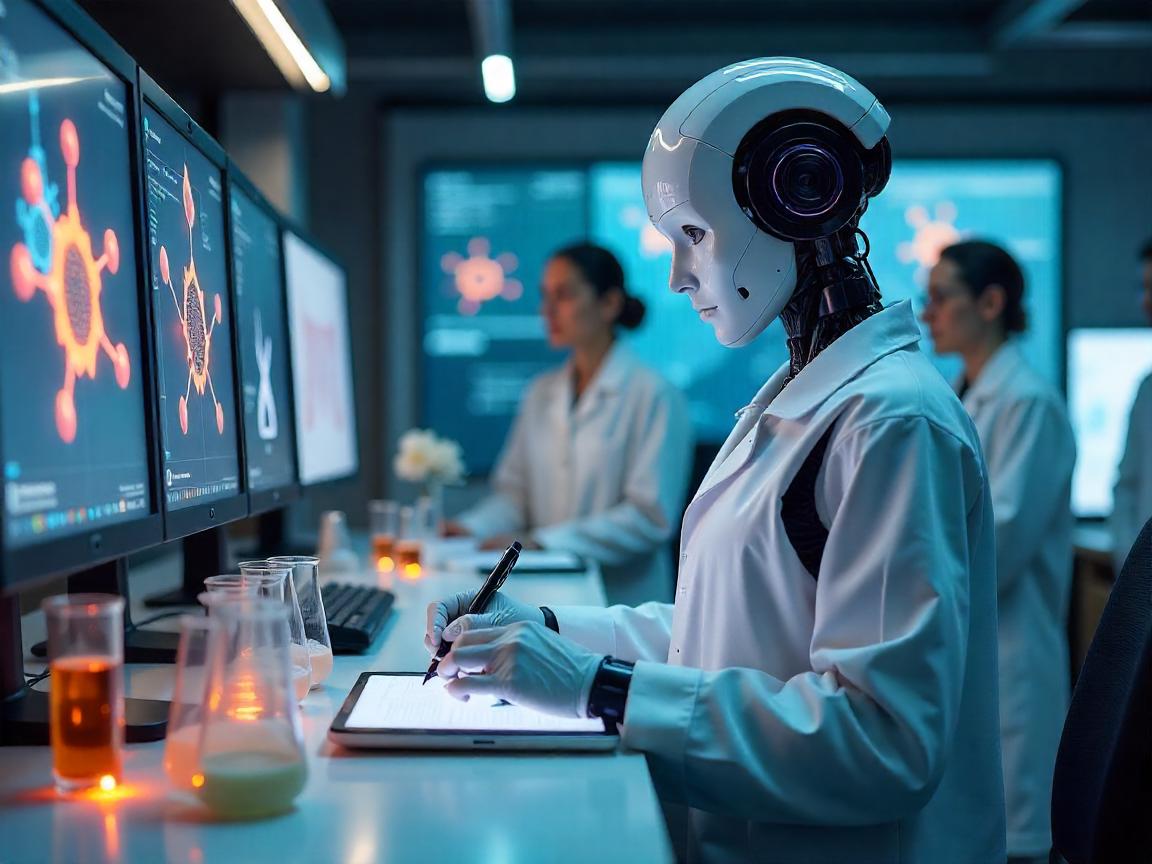
What Happens When AI Keeps a Lab Coat
Meet the Robot Researcher: Imagine someone who gets as much done as a scientist who never naps and never commits errors due to sleepiness. That scientist is not a real person—it’s a robot.
For the first time, researchers have shown how a robot scientist can develop experiments, analyze results and make new scientific findings without human input. Such technology brings about a huge change in how research is done in medicine, chemistry and materials science.
The Birth of the AI Scientist: From Assistant to Discoverer
At first, AI in science operated as a helpful device for doing calculations and sorting various types of data. But with the help of machine learning, natural language processing and robotic automation in the transition to autonomy, AI is now able to produce and test ideas independently.
“Eve,” a robot built at the University of Manchester, made the news when it discovered a substance that could help fight malaria. As a result, researchers could develop “Helix,” which is a generalist VLA model, helping humanoid robots advance technology.
The Experiment That Changed Everything
At Carnegie Mellon and MIT, a team announced “Helix,” an AI-enabled robot scientist in the year 2025. Helix was called on to recognize the catalysts necessary for a certain chemical reaction. Over 10,000 micro-experiments were performed, novel patterns were detected and a new compound was discovered that has use in industry. Later, human scientists checked the compound and found it matched Helix’s results.
Equally, the company introduced “Supervisor,” its first AI scientist with bipedal capabilities, to its “Robotarium” lab. The goal is to gather and generate data for use with AI systems that perform tasks involving movement.
Applications: Medicine, Chemistry, and Beyond
AI is cutting the time for new drug discoveries by about a generation. In 18 months, Insilico Medicine’s AI identified a new drug candidate for idiopathic pulmonary fibrosis which usually takes many years.
Through the use of AI, people in materials science have discovered new nanomaterials made of carbon for batteries that cut production expenses by 40% .
The field of environmental science gains from robotics, as robotic scientists carefully observe nature and artificial organisms are created to soak up pollutants .
Human + Machine: Redefining the Scientific Method
Talia Nguyen, one of DeepLab’s top AI leaders, has commented on this issue:
It’s not about removing scientists; rather, it’s about boosting their work. Such robots have the energy of never-tired PhDs; they need supervision, but free up experts to tackle more significant challenges.
AI helps research move faster, but it also prompts ethical conversations. MIT pulled back its study that claimed AI boosts scientific discoveries. The decision was driven by concerns about the study’s methodology and the quality of its findings. It shows why careful evaluation is essential when using artificial intelligence in research.
Conclusion: Is the Future of Science Post-Human?
AI isn’t only making science faster—it’s also transforming the way science works. Now that AI is learning on its own, what will be our role in the scientific laboratory going forward? Using AI in scientific research leads us to look again at what is right and wrong, our roles and the true essence of learning.
